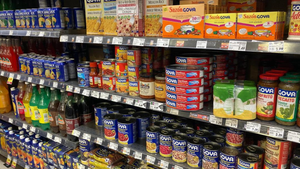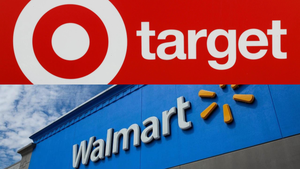Produce becomes a powerful differentiator in supermarketsProduce becomes a powerful differentiator in supermarkets
Retailers that respond to varying shopper interests can stand apart in a crowded sector
July 25, 2024

An appealing produce department is becoming an increasingly powerful shopper magnet, and a key variable that consumers consider when selecting a primary grocery.
“Produce is the ultimate destination category for supermarkets, and a great way for stores to differentiate,” said Russell Zwanka, associate professor of food marketing and director of the food marketing program at Western Michigan University in Kalamazoo.
The attractiveness of fruits and vegetables is a top factor that keeps shoppers returning to a store regardless of ethnicity, income, or geography, he said. “A beautiful, bountiful, fresh produce department is paramount to a supermarket’s success,” Zwanka said, adding that shopper interest in produce “has never been stronger.”
To stand out in a crowded and highly competitive category, retailers should adjust produce selections to the specific interests of shoppers in each location, he said. That can include offering items in smaller packages to ensure there is an affordable price point for cost-conscious consumers, Zwanka said.
In addition, providing larger assortments with worldwide sourcing and newer options will interest shoppers with more spending flexibility, he said.
Retailers can further enhance loyalty by offering produce in accordance with shoppers’ nationality and heritage, he said.
“Each culture has various needs to be met in the produce department, and it’s the supermarket’s role to satisfy these needs,” Zwanka said. “Retailers in a heavily Hispanic or East Asian area, for instance, need to understand what these cohorts need.”
Educating shoppers on produce benefits will also help overcome the category’s high-price stigma, which he said is often unjustified.
“A six-dollar bag of potatoes, which can be used for multiple meal occasions, is a better value than a $4.69 eight-ounce bag of potato chips,” he said. “Celery also can be used for multiple meals and healthy packaged greens at about $3.49 are worth the price.”
Ensuring that produce displays “stay full and fresh” will enhance the visual appeal as well and enable supermarkets to better contend with such channels as farmers markets, Zwanka said.
Retailers also will benefit from informing customers about an item’s origin, such as being locally or nationally sourced and whether it was grown in a sustainable manner, he said.
“Customers would love to know that the major supermarkets are at least trying to include the smaller farms and growers,” Zwanka said. “It takes more work, and is not as easy to source, but the shoppers appreciate the effort.”
Merchandising varieties of products with two to three stages of ripeness, including bananas and avocadoes, is another important way for retailers “to show customers that you understand what they want,” he said.
About the Author
You May Also Like





.webp?width=300&auto=webp&quality=80&disable=upscale)
